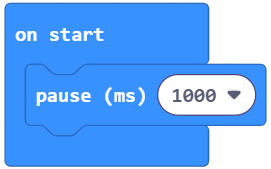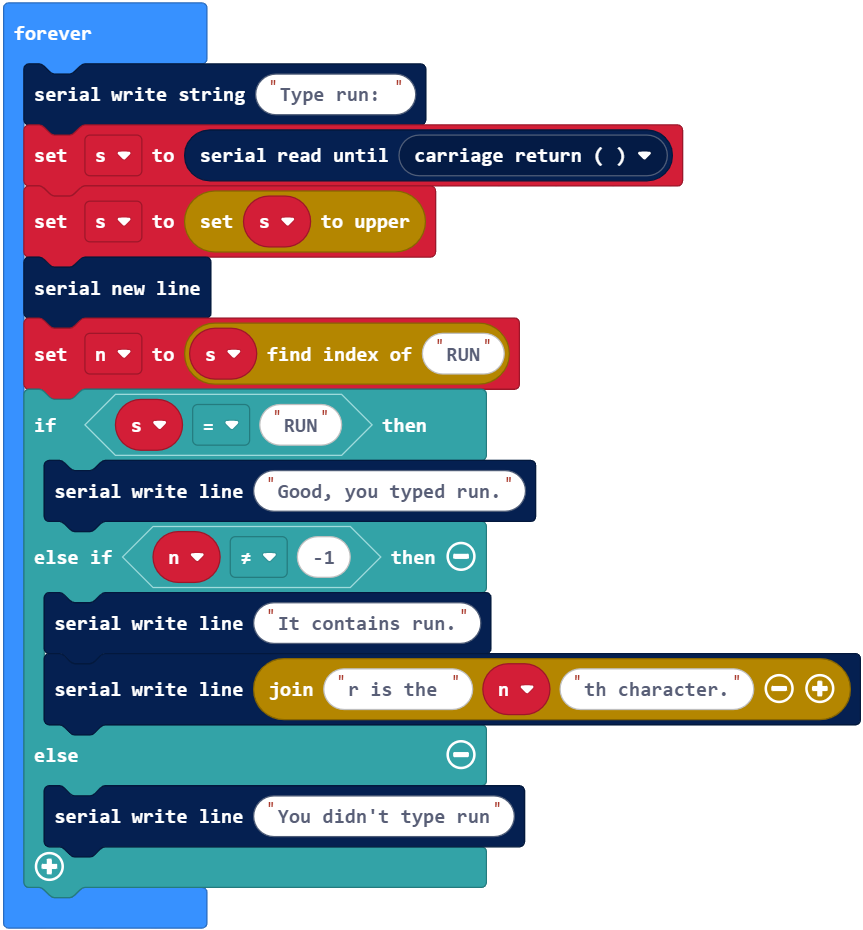Try This: Accept in Any Case
One use for the set () to upper block is to make menu systems accept whatever the user types, regardless of what combination of uppercase and lowercase characters have been used. This can be helpful in menu systems, because we might just want the project to do what it’s told, regardless of whether we typed run, RUN, Run, RUn, or some other combination. By calling set () to upper first, it makes it so the program only has to check for one word: RUN
Example project: other_blocks_try_this
This next example is a modified version of comp_find_check_your_turn from Compare, Find, Check. By adding a single set () to upper block, we can avoid checking for every conceivable combination of run, Run, RUN, RuN, etc.
- If it’s not already open, then open comp_find_check_your_turn.
- Set the name to other_blocks_try_this.
- Add the block set (s) to (set (s) to upper) shown below.
- Click the Download button.


- Open the serial terminal.
- Try typing run, Run, RUN, and some other combos, and verify that all are accepted as “run”.

